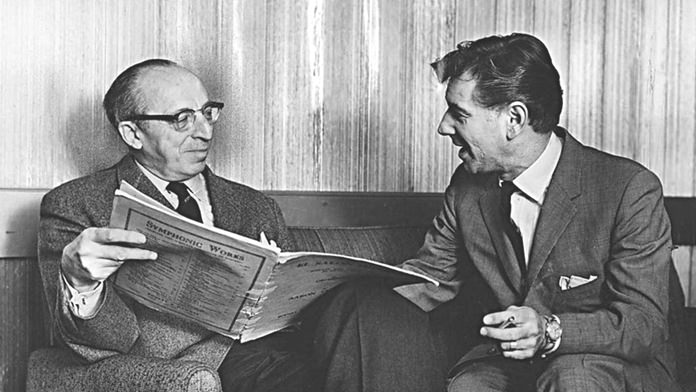
In 1939 the American composer Aaron Copland published the first edition of his book What to Listen for in Music. In it, Copland described how music could be listened to at three levels which he described as the sensuous, the expressive, and the purely musical. He also felt that an astute listener is “constantly moving from one level to another as the musical work unfolds”.
The sensuous level is the most basic: a simple pleasurable experience which requires the least amount of mental processing. It’s a bit like being pleasantly aware of background music. Copland’s expressive level (the second one) requires some concentration and might involve sensing some kind of emotion or expressiveness in the music which we may not be able to articulate, but we know it’s there.
Copland felt that most people do not reach the musical level (the third one) in their listening because this is the level at which most musicians operate. It’s about the notes of the music, how they interact with each other and about understanding the internal mechanics of the music. Professional musicians, composers and arrangers always listen at this level. However, I suspect that Copland was simplifying things. It seems to me that there is a missing level between levels two and three. But I’ll leave you to ponder that at leisure.
Let’s try to unpack Copland’s idea. Imagine the sound of an unaccompanied voice singing a wordless melody. At the first level you’d be simply hearing the song without giving it any thought: you’d be pleasantly aware of it, but that’s about all.
At the second level, you would be listening more carefully, hearing the quality of the voice and noticing the character of the song. Perhaps you might feel some kind of expressive quality within the music.
At the third level, the purely musical one, a whole new world of sound opens. You’d be aware of the tonality – whether the song is in a major or minor key or whether it’s modal. You’d notice the individual notes of the melody, how they relate to each other and how the elements of tension and relaxation are created within the melodic line. You’d notice the exact intervals between the notes, the rhythms in the melody and the inherent harmony, the changing tone colours of the voice, the length and difference between the musical phrases and the changes in dynamics. You’d probably also notice the overall structure of the melody.
This third level of listening clearly requires more mental activity on the part of the listener as well as a technical understanding of music. It’s sometimes called active listening and it means giving the music your undivided attention. This doesn’t mean that listening becomes a chore: it becomes more of an enriching experience. As Copland suggested, the listener often switches from one level to another, sometimes just to appreciate the sheer beauty of the music. The implication for music education is perfectly clear.
Aaron Copland (1900-1990): Piano Concerto. Aaron Copland (pno), New York Philharmonic Orchestra cond. Leonard Bernstein (Duration: 18:35; Video: 480p)
Here’s a treat, if ever there was one. This spiky little concerto which Copland described as “the slow blues and the snappy number” predates his popular “big-country” musical style of the 1930s and 1940s. He wrote the concerto when he was 26 and it’s a jazz-influenced piece which was common enough in the 1920s. Of course, it isn’t actually jazz, nor does it pretend to be. Copland simply drew on ideas from the popular music of the time into his own emerging musical style.
The concerto remained unknown for many years after its premiere until the composer brought it back into the limelight in a recording with Leonard Bernstein in 1962. This film was made at a New York Philharmonic Young People’s Concert in February 1964 and the performance is introduced by Bernstein.
Leonard Bernstein (1918-1990): Symphonic Dances from “West Side Story”. Simón Bolivar Orchestra cond. Gustavo Dudamel (Duration: 23:04; Video: 480p)
In 1961 Bernstein prepared a suite of orchestral music from the hugely successful show. The orchestration is partly the work of the composer’s colleagues which was common practice on Broadway. These dances are therefore the product of many different orchestrators with a final editing done by the composer. There’s some lovely orchestration too. Listen out for the magic moment when the song There’s a Place for Us emerges at 04:20. It’s a breath-taking few bars, delicately and transparently scored. Bernstein and his orchestrators used colourful instrumental combinations and a huge percussion section.
This is a stunningly good performance by the celebrated Venezuelan orchestra. Notice that as always, Gustavo Dudamel conducts without a score, for he has a phenomenal memory. He is probably one of those rare people who listens at what would be Copland’s fourth level and therefore far ahead of the rest of us.
 |
 |
 |





